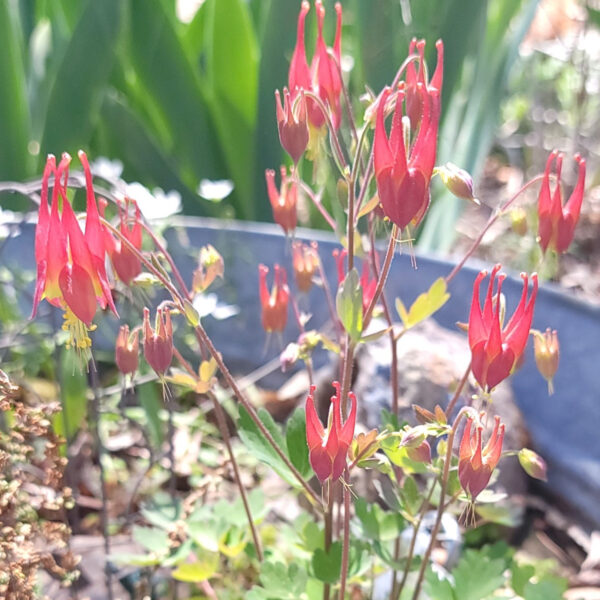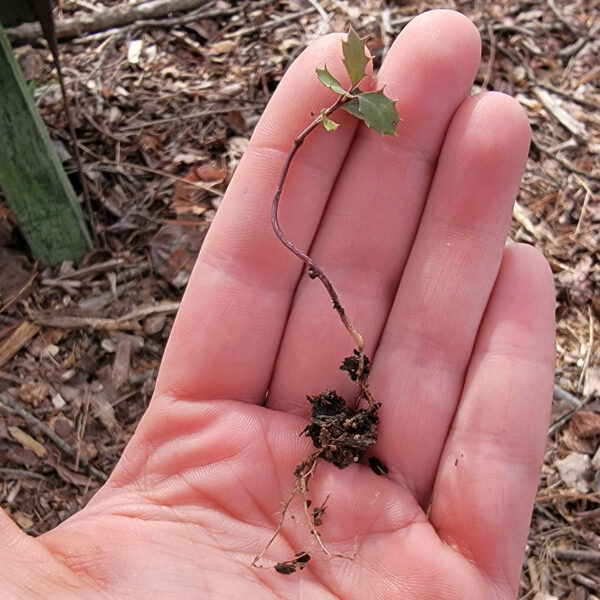bottomlands
Showing 1–12 of 14 results
-
Aquilegia canadensis (eastern columbine)
$8.00Select options This product has multiple variants. The options may be chosen on the product pageEastern columbines of all kinds! Little Lanterns is dwarf and compact, standard (available later 2025) is what you’re used to seeing.
-
Carex glaucodea (blue sedge)
$6.00Add to basketBunny Blue Hobb isn’t the only blue sedge in town. Carex glaucodea, actually called blue sedge, commonly grows in damp shady eastern woodlands.
-
Danthonia spicata (poverty oatgrass)
$6.00Add to basketOne of the top performing grasses in Cornell’s native lawn demonstration area, try replacing your exotic turf with our native Danthonia spicata.
-
Ilex opaca
$8.00 – $16.00Select options This product has multiple variants. The options may be chosen on the product pageAmerican holly trees are extremely slow-growing trees. However, as a keystone species, it is worth growing at least one or two on your property.
-
Podophyllum peltatum (mayapple, American mandrake)
$10.00Add to basketThis spring ephemeral groundcover has a close association with the state-vulnerable eastern box turtle, which favors its fruit and disperses it in the wild.
-
Potentilla canadensis (running five-fingers)
$6.00Add to basketCute yellow-flowering ground cover that doubles a native lawn alternative that can grow in a wide variety of conditions, including full sun and drought.
-
Salvia lyrata (lyreleaf sage)
$6.00Add to basketLyreleaf sage is the only sage known to be native to southeastern Pennsylvania. This evergreen attracts pollinators and does well in a native lawn.
-
Symphyotrichum novae-angliae (New England aster)
$8.00Add to basketSeed grown New England asters, 2nd year plants potted in 4-inch deep pots, ready to be planted and grown. These are one of the PA keystone species.













